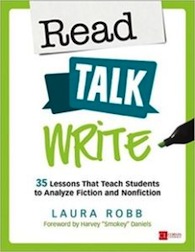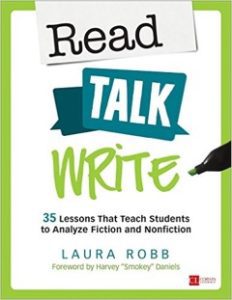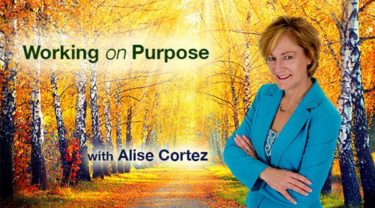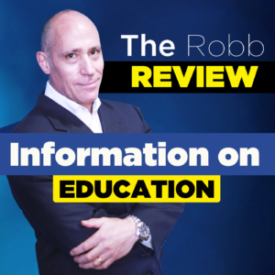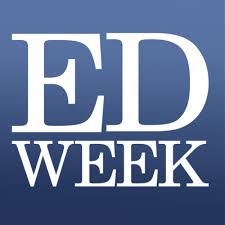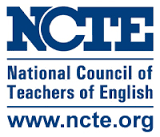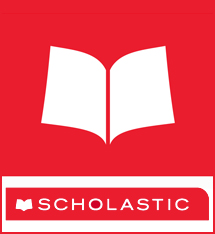Wants or Needs? That Is The Question
Educators and departments of education often believe that’s what’s new in learning will bring about significant change. I remember when filmstrip and film loop devices, as well as cassette players, were going to change education. In learning centers, my fifth-grade students watched filmstrips about history, science, or math; they listened to tapes of authors discussing their books. For several years, classrooms had a television monitor, and part of the curriculum was students watching science experiments and listening to current events. In those moments, we believed this was cutting edge learning! WRONG!
Today, most classrooms have several computers and tablets and soon all students will have a laptop and/or a tablet. Beware of using technology to continue practices that need to go: completing worksheets, answering questions at the end of each chapter of a book, or looking up a list of words on an online dictionary. Technology, used well can enhance learning and the digital natives you teach will appreciate Padlet, which allows them to respond to a discussion or story in real time, Storybird for digital storytelling, and an app to create digital portfolios.
Changes in education are abundant and continually happen. However, if we look back, we can see some of these past needs—must-haves—have faded away. I’d be hard-pressed to find a filmstrip, film loop viewer, television, or a cassette tape player in any classroom today. So now, it’s time to state one truth: needs and wants in education change, but there’s one exception: books.
Too many educators in administrative positions in school districts and in state departments of education believe books are a want and not a need. Instead of investing in books and teachers, too many schools purchase expensive reading programs on computers, believing that technology will transform students reading far below grade level into readers. Reading short selections on a computer, working on skills in isolation, and answering a set of multiple-choice questions doesn’t improve students’ reading skill. Looking for technology to make a quick fix can’t work as interacting with a computer doesn’t develop students’ ability to read long, complex texts, discuss texts, become active listeners, develop stamina, and analyze details. I’m in favor of using technology to enhance learning, not to replace interactions between students and a highly skilled teacher. All readers, especially those in grades 4 to 8 reading at a primary level need a skilled teacher and books. And here are ten reasons why. #booksandteachersmatter
Ten Reasons Why Books and Skilled Teachers Are Needs
- Skilled teachers love to learn. To become a skilled reading teacher means keeping abreast of the newest research and best practices. Skilled teachers read professional books and articles and join Twitter to develop a PLN (Personal Learning Network) so they can make a difference in the reading lives of children.
- Reading is social. In addition to students interacting with the book’s author, they benefit from interacting with peers during guided reading, student-led literature circles, and book clubs. A need to share emotions, fears, and predictions are part of reading. Conversations bond readers to books because talk can affect their hearts and minds. To share ideas with others—to talk about books in a group or conference—not only improves recall and understanding but also invites readers to organize their ideas so listeners understand them.
- Teachers provide face-to-face positive feedback. Working with small groups enables teachers to notice and spotlight interactions that work. Building on positive behaviors—“I notice how you found evidence to support your inference.” or “I noticed how well you used picture clues to figure out that word’s meaning,”–develops the self-confidence students need to continue to work hard.
- Teachers form relationships that motivate students. It’s impossible to form a meaningful relationship with a computer. But when teachers and students interact with books, opportunities abound to develop trust and experience humor in a nurturing environment.
- Teachers make decisions to support readers. Computers can grade multiple choice tests and cite the number right and the type of questions a student missed such as factual, main idea, inferring. A skilled teacher offers helpful feedback in the moment and then uses what students say and do to make decisions about interventions and next steps.
- Teachers cultivate critical thinking and inferring. Whether working with a small group or one-on-one, teachers can model the process of inferring or using context clues to determine a word’s meaning. By thinking aloud and modeling, teachers build students’ mental model of how a process works.
- Books by the finest writers should be read. When students read beautifully written, engaging books, they also learn about excellent writing and how specific genres work.
- Volume matters. The number of books students read with the guidance of a teacher and the amount of independent reading they complete matters. The more students read and practice, the more they improve and move forward.
- Picture books develop visual literacy. Instead of reproducible books, learning to “read and interpret” outstanding photos or illustrations is frequently students’ introduction to art and critical thinking.
- Poetry cultivates fluency and comprehension. Follow Tim Rasinski’s advice and research and have students select a poem a week, practice saying the poem to a partner, and performing the poems to develop fluency and improve vocabulary and comprehension in an authentic way.
Closing Thoughts
Remember, no replacement exists for a highly skilled teacher, and every child deserves one. Immersing students in books, giving them choice, and allowing them the time to learn how to self-select a book they can read for independent reading can make a huge difference in their progress and desire to read at home and school.
Books and skilled teachers make a difference in learning to read and developing a rich, personal reading life. Malala Yousafzai understood the power of the book, the pen, and an educated child when she said: “One child, one teacher, one book, one pen can change the world. Education is the only solution. Education first.” Malala Yousafzai #booksandteachersmatter
Differentiating Reading Instruction By Laura Robb
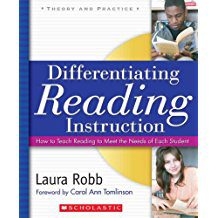
![]()

